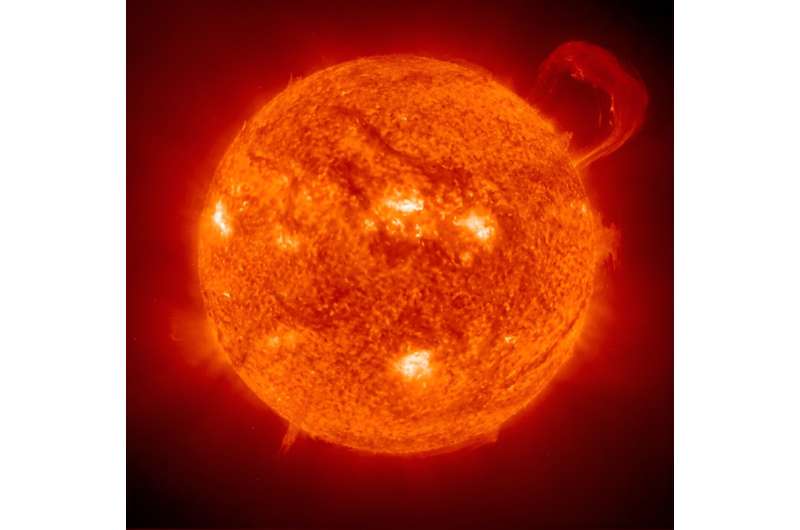This article has been reviewed according to Science X's editorial process and policies. Editors have highlighted the following attributes while ensuring the content's credibility:
fact-checked
peer-reviewed publication
trusted source
proofread
Machine learning hunts for the right mix of hydrogen isotopes for future nuclear fusion power plants

The process that powers the stars—nuclear fusion—is proposed as a future power source for humanity and could provide clean and renewable energy free of the radioactive waste associated with current nuclear fission plants.
Just like the fusion process that sends energy spilling out from the sun, future nuclear fusion facilities will slam together isotopes of the universe's lightest element, hydrogen, in an ultra-hot gas or "plasma" contained by a powerful magnetic field to create helium with the difference in mass harvested as energy.
One thing that scientists must know before the true advent of fusion power here on Earth is what mix of hydrogen isotopes to use— primarily "standard" hydrogen, with one proton in its atomic nucleus, deuterium with one proton and one neutron in its nucleus, and tritium with a nucleus of one proton and two neutrons. This is currently done with spectroscopy for prototype fusion devices called tokamaks, but this analysis can be time-consuming.
In a new paper published in The European Physical Journal D, author Mohammed Koubiti, associate professor at the Aix-Marseille Universite, France, assesses the use of machine learning in connection with plasma spectroscopy to determine the ratios of hydrogen isotopes for nuclear fusion plasma performance.
"In terms of performances, fusion power plants will be operated with a mixture of deuterium and tritium since their nuclear fusion is optimal, but the content of tritium must be controlled and strictly managed to respect the limits imposed by the regulation authorities," Koubiti says. "Also, it may be necessary to know on a real-time scale the content of tritium to optimize the performances of the nuclear power plant."
Koubiti explains that to develop a way of doing this he turned to a combination of machine learning and spectroscopy.
"The ultimate aim is to avoid using spectroscopy, whose analysis is time-consuming, and replace it — or at least combine it — with deep learning to predict tritium contents in fusion plasmas," Koubiti explains. "This study is only a step towards that. I am still using spectroscopy as a means of allowing me to find other features that can be used by deep learning algorithms to predict as a function of time the tritium content in fusion plasmas."
Koubiti adds that the next step is to go to the end of this project by identifying the non-spectroscopic features that must be provided to any deep-learning algorithm. He then aims to test the findings on several magnetic fusion devices, tokamaks like JET, ASDEX-Upgrade or WEST, DIII-D, and stellarators — plasma devices that rely on external magnets to confine plasma.
"I also plan to extend the use of deep-learning technique beyond plasma spectroscopy," concludes Koubiti.
More information: M. Koubiti, Application of machine learning to spectroscopic line emission by hydrogen isotopes in fusion devices for isotopic ratio determination and prediction, The European Physical Journal D (2023). DOI: 10.1140/epjd/s10053-023-00719-0
Journal information: European Physical Journal D
Provided by Springer





















